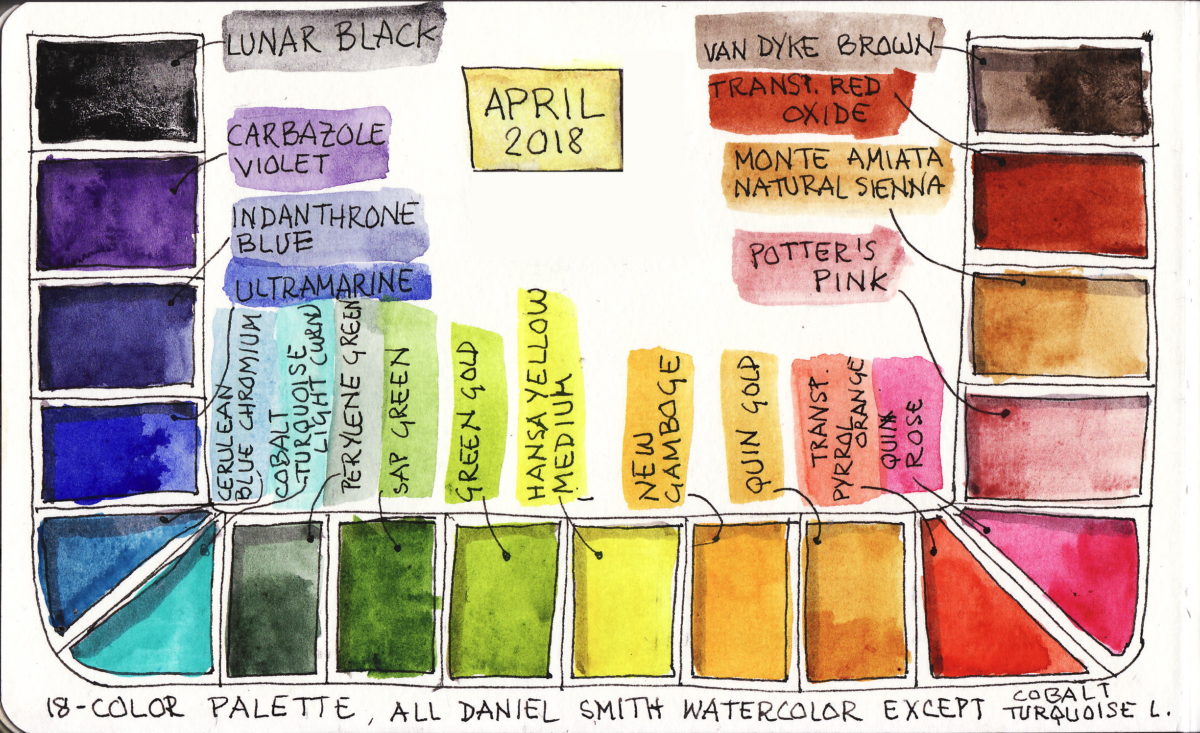When sketching on location or traveling, however, a heavy and breakable ceramic plate is not very practical. Many watercolorist don’t care about stained palette, but I like to have a white-ish surface to mix color on. For a while I thought that metal palettes would be the solution (like the butcher tray I used for acrylics), but it turns out that metal palettes stain too.
So I started looking around for a solution to pigment staining. I found suggestions to use Mr Clean Magic eraser, or abrasive powders and sponges. I wasn’t enthusiastic about any of these solutions, thought that scratching your palette would make the staining problem worse, so I experimented a bit on my own.
I found out that there is a great solution to palette stains, and something you might already have in your art cabinet.

Most art supply stores (at least in the US) have a product called The Masters Brush Cleaner and Preserver, a soapy cake used to clean brushes from paint residues and to condition them. I recently used this product to reshape a good brush that had been squashed and misshapen during travel.
As it turns out, this brush cleaner is a the perfect detergent for plastic (and metal) palettes that have stained by watercolor pigments. You only need a sponge, water, and some scrubbing.

Recently I did one of my “palette surgeries,” a process of removing watercolor paint from one palette and to add it to another to avoid waste (I didn’t realize it was even possible until I read somewhere how to do it; I will post on this fun process in the future). The old palette from which I removed the paint looked like this after the surgery, and after being washed with normal soap and an old toothbrush.

You can see how even if I had cleaned the with soap and a brush, both the mixing areas and the wells still have color stains, especially where staining colors such as phthalos and quinacridones rested on the plastic surface.

This is the palette after a good scrub with Masters brush cleaner and sponge. There are still some faint stains, which probably could have been cleaned with more scrubbing, but this was good enough for me. It was easier to clean up the flat mixing surface than the narrow wells because of their shape and the difficulty to get to all the corners with some pressure.
I’ve used this method on metal palettes, and even on the mixing area of Maria Coryell Martin’s Pocket Palette and it’s worked great in all situations.

Give this method a try next time that you want to get read of pigment stains from your palette. If you don’t already have the Masters brush cleaner you can buy the smallest container and see how it works.

January 2, 2022
This is why I love the internet- it worked like a dream on my metal travel palette. Thank you!